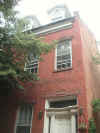 |
New York
Architecture Images-Soho Harrison Street Row Landmark |
|
architect |
John McComb, Jr. |
|
location |
25-41 Harrison St. (at Greenwich St) 1, 9 to Franklin |
|
date |
Built in 1828, moved and restored in 1975 by Oppenheimer, Brady & Vogelstein. |
|
style |
Federalist |
|
construction |
|
|
type |
Houses |
|
|
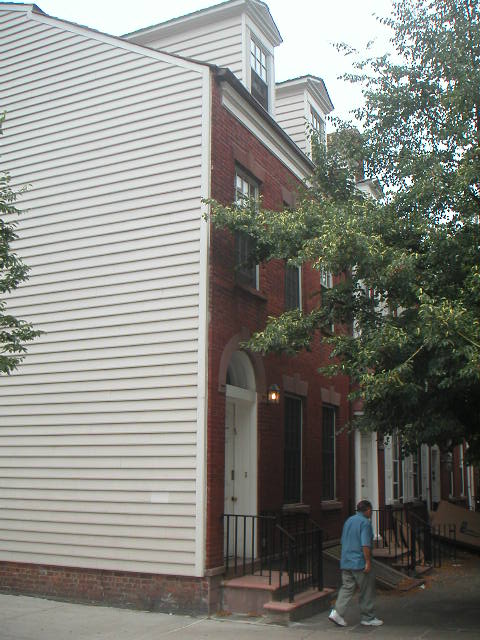 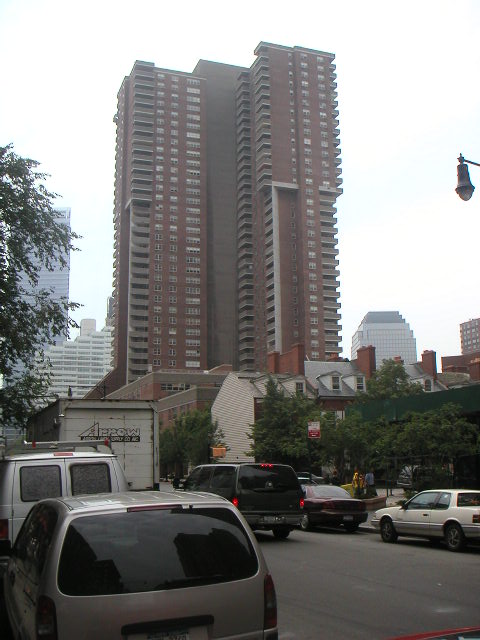 |
|
|
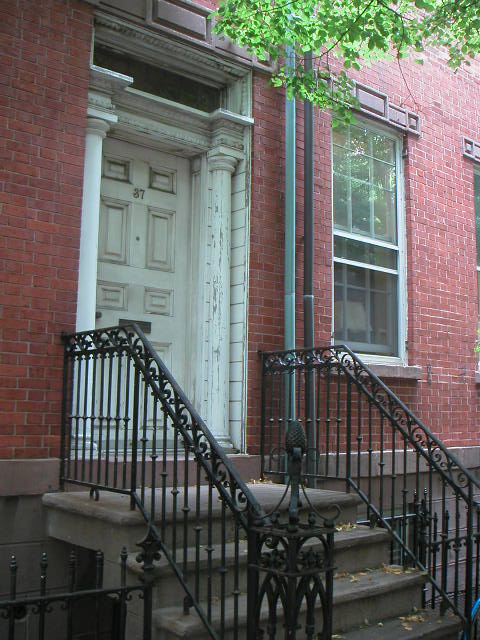 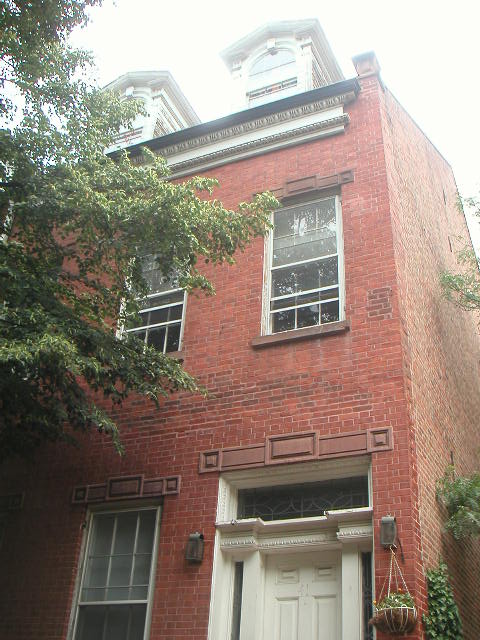 |
|
In the Shadows of Independence Plaza, on Harrison St., is a row of restored 18C townhouses, known as the Harrison St. houses, formerly on Washington St. but moved around the corner when the college was built on the river in the late 70s. Nos. 25, 37, 39, and 41 were built by John McComb, Jr., architect of City Hall, who lived in one. Harrison St. takes its name from Harrison's Brewery, which stood near the river in pre-Revolutionary days and presumably belonged to one George Harrison, who also had an estate in this area. 25 to 41 Harrison Street: A Historic Renovation Improving With Age By CHRISTOPHER GRAY THE architects Oppenheimer, Brady & Vogelstein and John Pruyn designed the overpowering 40-story Independence Plaza North on Greenwich Street from Duane to North Moore Streets. The three Washington Street buildings were relocated to the east end of the Harrison Street row, making six houses facing Harrison Street in all. Herbert Oppenheimer says the ground floors of the houses had been heavily altered or destroyed during their period of commercial use, and so the doorways, windows and lower facades were almost all new. He says the contractors sandblasted the replacement brick to age it, but "we didn't want it to match perfectly." But the rebuilt exteriors, completed in 1975, struck a tinny note. Paul Goldberger, writing in his 1979 book "The City Observed: New York," criticized the recreation of the long- vanished residential character of the buildings, compared with the vitality of the commercial area of TriBeCa. "There are facades at Disneyland that look more real, and all that these houses make you want to do is run back again across Greenwich Street where old buildings are still real and not kept alive by artificial respirator," he said. But when the city put the houses on sale, many people were eager to buy. "My husband and I liked to walk down to this area; we used to dream about what it had been like," said Eugenia Wiener, who had been living on 20th Street with her husband, Norman. "But one day the whole place was leveled, except for these houses." The city offered the houses for sale, with unfinished interiors, for $35,000 to $75,000, and began transferring title in 1976. Most of Washington Street in this section was destroyed, except for a Belgian block section just south of Harrison Street, and Mr. Oppenheimer's firm created an L-shaped court reaching around to the back of the houses. Now, more than two decades later, the renovation of 1975 is beginning to show its age. At 27 Harrison Street, the old McComb house, the architect Gregory Talmont designed a new slate roof, finished earlier this year, to replace the old wooden one. At 25 Harrison Street, the old Wood house, Barrie Mandel says she has to replace her rotting clapboard side wall. Ms. Mandel, a real estate broker at the Corcoran Group, says that she would have preferred to have a real brick wall but that — because of limited width — "it would have to be those fake bricks, which I dislike" so she is retaining the clapboard. Scott Frances, a photographer, moved into 31 Harrison Street with his mother and father when he was 21, and now owns it. He says that, by modern preservation standards, much of the exterior restoration was crude and unconvincing. But he likes the picturesque, relaxed character of the enclave. "My kids have been born and raised here," he said. "You can let them play in the back and watch them from your kitchen window. It's not like the rest of New York City." Mr. Frances also says that his view of the buildings has changed over the decades, as the new material has weathered. "The houses have gained in age over 25 years," he said. "Now they look old again. It's a question of time, and patina." |
|
|
links |
|